pectus excavatum baby breathing
Pectus excavatum is usually noticeable soon after birth. Miamis family soon realized her mother may also have the condition and was unaware until Miami was diagnosed.

An Extensive Guide To Pectus Excavatum Find Expert Advice
As the ribcage is more rigid than normal it can make it difficult to completely breathe out expire.

. Those with moderate-to-severe condition may have symptoms such as shortness of breath fatigue exercise intolerancelimitations and chest pain. The first recorded description of pectus excavatum was in a 7 years old boy from Spain. There isnt any scientific data about pectus excavatum breathing in babies.
Your provider will perform a physical examination. This causes the sternum to grow inward. Pectus excavatum can range from mild to severe.
Pectus excavatum also referred to as sunken chest is a depression in the chest wall. The lower half of the breastbone may press on the heart and lungs. An infant with pectus excavatum may have other symptoms and signs that when taken together define a specific condition known as a syndrome.
We recently noticed that my little boys chest has a little concave dip in it when he breathes in - the GP has said that he has pectus excavatum and that as his breathing is totally fine it is nothing to worry about. The body needs more oxygen and energy during the reproduction process. Take a full breath and exhale in the balloon until your lungs are empty.
It occurs mostly in boys and frequently more members in a family are affected. Having looked online I see that it can become more pronounced as baby grows. Then breathe normally and take a second.
Children with pectus excavatum sometimes also have scoliosis. Squeeze the balloon with your fingers so the air wont come out. It is essential to give your body enough oxygen while youre pregnant.
Yes you can do some light pectus excavatum exercises during your pregnancy. The primary goal of surgery for pectus excavatum is to correct the chest deformity to improve a patients breathing and cardiac function. The deformity may be symmetrical the same on both sides or may be more prominent on one side of the chest.
Its connected to a pump that sucks the air out of the device creating a vacuum that pulls the chest forward. In 1594 Bauhinus wrote my father showed me a boy 7 years of age among the Nobles of Andalusia who was born with the sternum and ribs being bent back to the internal part of the chest and abdomen so that a large cavity appeared there. Repositioning the sternum to a more normal outward position lessens pressure on the heart and lungs allowing them to function more normally.
Rarely they also have Marfan syndrome. Pectus excavatum is due to too much growth of the connective tissue that joins the ribs to the breastbone sternum. What to Expect at Your Office Visit.
Feelings of depression or anger about the condition. PE can often be hereditary. As a result there is a depression in the chest over the sternum which may appear quite deep.
This can cause shortness of breath with exercise. Pectus excavatum funnel chest is when your childs breastbone is pressed inwards and they have a dip between their ribs. For others it may affect their heart or lung function.
The historical perspective. Provide slight upward rotation of the ribcage and isometric control for outward movement of the chest creates negative intrathoracic pressure 2. A child can be born with pectus or develop their pectus during their pubertal growth spurt.
Pectus excavatum PE is a condition where the breastbone in the chest is sunken inward causing breathing difficulties and in rare cases mild cardiac issues. Mild pectus excavatum in young patients often can be treated at home with a vacuum bell device. Another sign for parents is coughing.
If the condition is severe the heart and lungs can be affected. Pectus excavatum - dip in babys chest. That can be caused by a hard pushing of the breastbone into the lungs.
Feeling tired even when not being active. Ribcage problems do not usually cause problems when the heart and lungs are developing but rarely can affect how well they work in later childhood. This triggers diaphragm descent and abdominal outward displacement creates increased intra- abdominal pressure Exhalation.
A hollow depression in the chest that may be broad and shallow deep and narrow or irregular more rapid breathing than normal. Some children with funnel chest will live a normal life. This will lower the chances it will blow up in your face.
Studies have shown that pectus excavatum in babies can also cause respiratory infections. Those with a mild condition often do not have symptoms. The opposite condition called pectus carinatum is when the chest bows outward.
The depression may be in the center of the chest or more pronounced on one side. Pediatric specialists say that newborns and infants dont have breathing troubles caused by pectus excavatum. In infancy symptoms of pectus excavatum can include.
Correcting the abnormality when still young and growing a patient can return to relatively normal function and lifespan. With a severe case of pectus excavatum there can be compression of the heart. Their breathing is normal and there isnt anything to worry about.
In severe cases of pectus excavatum the chest cavity is divided almost in half by the abnormal sternum and ribs. 27072017 at 253 pm. Should be a passive process.
HELP DOCTOR THOMAS SURVIVE THE MEDICAL BOARD TRYING TO TAKE HIS LICENSE BY DONATING TO THE CHANNEL. Pectus excavatum a deformity of the sternum and ribs caused by an unbalanced costochondral hypertrophy is a congenital abnormality with a prevalence of 1 per 1000 patients. The pectus may become more severe or apparent during periods of rapid growth.
First stretch out the balloon so it becomes more flexible. As you already know the pectus excavatum deformity can decrease the lung capacity. The crying is closely related to chest bone pain which is one of the most common signs of pectus excavatum.
1 2 Pectus excavatum may be associated with connective tissue disorders such as Marfan and. Pectus excavatum may be mild moderate or severe. In this nonsurgical approach the bell device is placed on the chest.
Over time the chest wall stays forward on its own. Thats because they arent doing any strenuous physical activity. The lungs and heart and great vessels can be compromised causing problems with breathing and exercise intolerance.
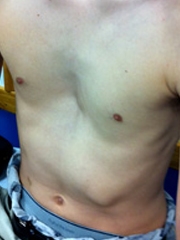
Pectus Excavatum Children S Hospital Of Philadelphia
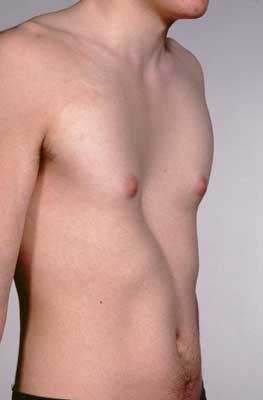
Pectus Excavatum Chest Wall Deformities Child Heart Specialist

History Of Pectus Excavatum Treatment Nuss Procedure Chkd

Pectus Excavatum Chest Wall Stanford Children S Health

Learning About Pectus Excavatum Repair In Children
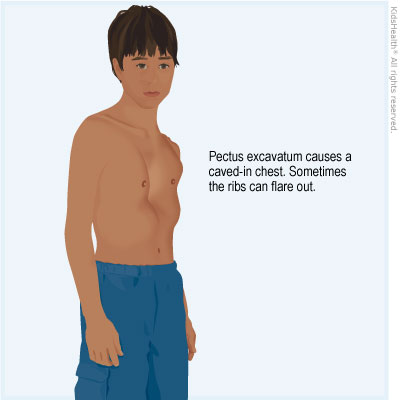
Chest Wall Disorder Pectus Excavatum For Parents Primary Children S Hospital
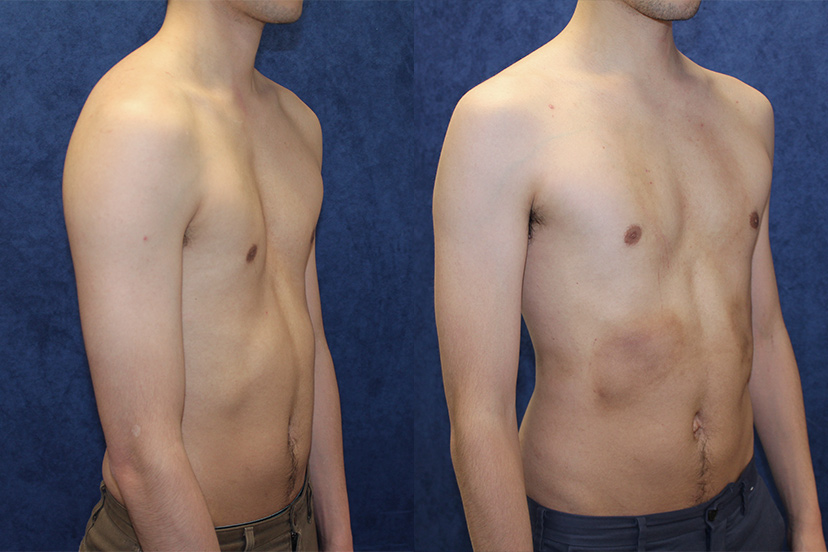
Pectus Excavatum Case Histories

Pectus Excavatum Background Pathophysiology Epidemiology Pectus Excavatum Medical Pictures Medical
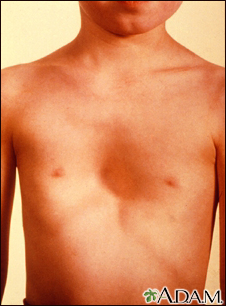
Pectus Excavatum Information Mount Sinai New York

Pectus Excavatum Chest Wall Stanford Children S Health
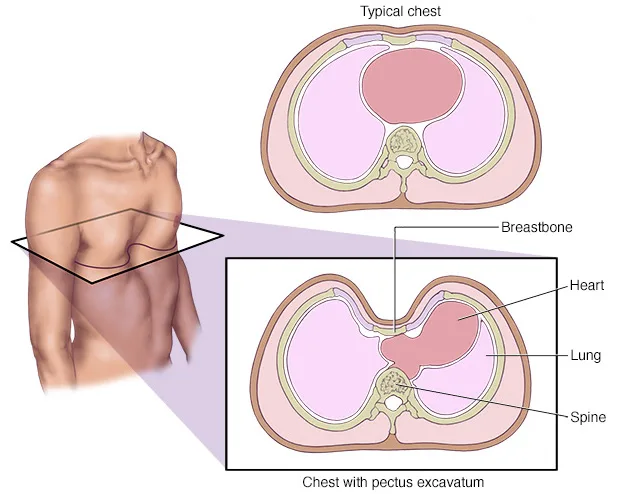
Pectus Excavatum Chest Wall Deformities Child Heart Specialist

Youtube Pectus Excavatum Breathing Exercises Workout Programs

Help My Baby S Chest Is Caving In Pectus Excavatum Dr Paul Youtube
Teen Undergoes Surgery To Repair Sunken Chest Myrtle Beach Sun News

Pectus Excavatum Surgery Introduction Surgery Options And Benefits Hubpages

Postnatal Photograph Of The Child With Pectus Excavatum Download Scientific Diagram

1 Pectus Excavatum Is Often Seen In Infants This 11 Month Old Child Download Scientific Diagram

